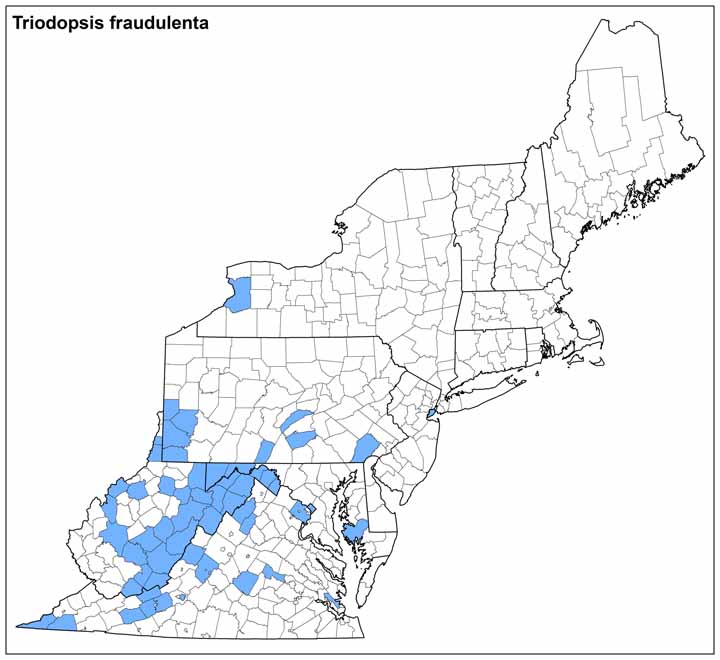Land Snails
.jpg)
.jpg)
Photo(s): An old shell of Triodopsis fraudulenta, exhibiting the prominent parietal tooth and recessed palatal tooth, © Ken Hotopp.
Click photo(s) to enlarge.
Triodopsis fraudulenta (Pilsbry, 1894)
Family: Polygyridae
Common name: Baffled Threetooth
Identification
Width: 14.5-16.5 mm
Height: 7-9 mm
Whorls: 6+
The tightly-coiled whorls of Triodopsis fraudulenta end in a mild descent at the aperture, which has a widely-reflected lip. Radial striae are regularly spaced on the body whorl, and the open umbilicus (wider than that of T. fallax) is covered in tiny papillae. The squared-off tooth on the outer lip is recessed in the aperture. The parietal tooth is long, high, and straight, and the basal tooth is small and blunt. Though similar, the shell of T. fraudulenta is not as depressed as that of T. tridentata.
Ecology
This snail lives in leaf litter on the ground surface in both “duff” and “turf” habitats. In addition to being found in leaves and around logs in wooded, hilly areas, it is also sometimes found in grassy places such as roadsides and meadows (Hubricht, 1985).
Taxonomy
T. fraudulenta has also been known as Polygyra tridentata fraudulenta.
Distribution
Triodopsis fraudulenta is a central Appalachian Mountain endemic, found from central Pennsylvania to western Virginia (Hubricht, 1985). In Virginia it inhabits the western mountains.
Conservation
NatureServe Global Rank: G4
NatureServe State Rank: S3
Virginia’s wildlife action plan: Tier IV
Ken Hotopp, Meegan Winslow 10/2012
Range Map (click to enlarge)


